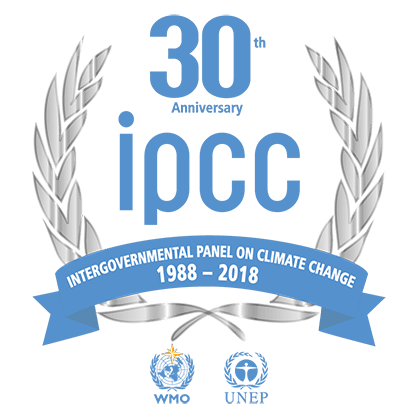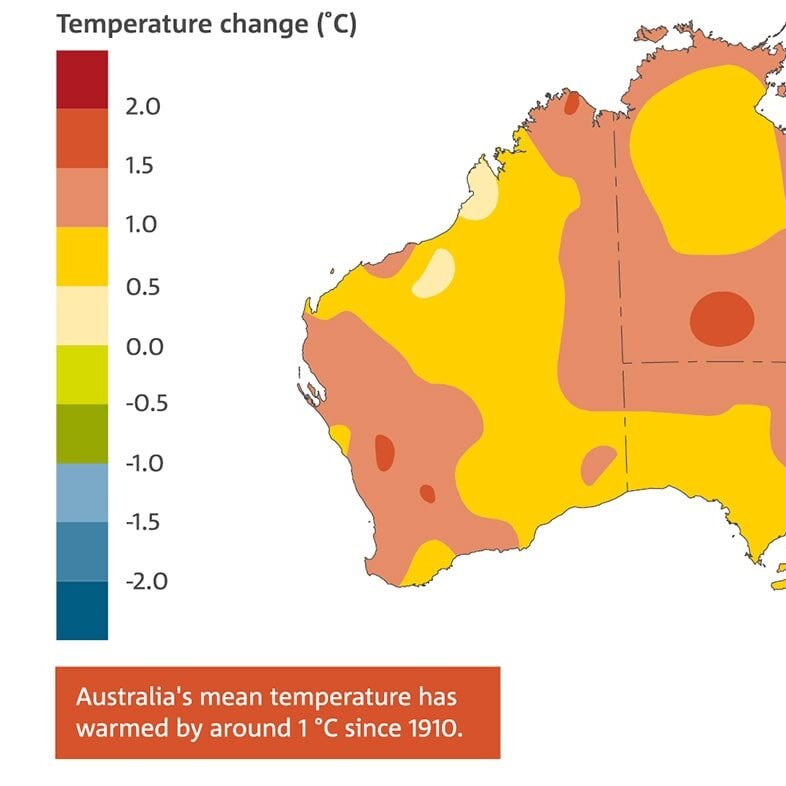TACKLING CLIMATE CHANGE
Global climate change plans
The Millennium Development Goals set up by the United Nations in the year 2000 have been modernised and have evolved into the Sustainable Development Goals (SDGs). One of these recognises the interconnectedness of social, economic and environmental issues in relation to climate change. It is “Goal 13: Climate action – Take urgent action to combat climate change and its impacts”.
Read More
Several agencies around the world apart from the United Nations are contributing to the science behind motivation and goals for global climate plans, though generally the leader in discussions and reports is the International Panel for Climate Change (IPCC).
What are the main plans for addressing climate change?
The call to action is obvious. The devil is in the details, and there are several action plans for working on climate change. The most prominent plan was put out by the IPCC in 2018. This report focuses on the urgency in ensuring that global temperature rise does not exceed 1.5 degrees Celsius above the global average temperatures as they were BEFORE industrialisation. The report was based on the requirements of the Paris climate agreement of 2015, where signatory countries agree on steps to reduce their carbon dioxide emissions, in order to limit overall global temperature increases of 1.5 to 2 degrees Celsius. For this reason, it has become known as the 1.5 degree report.
What are the main points of the 1.5 degree report?
- Significant action and transformation in all sectors are needed now
- The amount of change that is required (in transport, energy, industry, urban sectors around the world) is of a scale that we have not experienced before. It is an enormous undertaking but also a huge opportunity for jobs and sustainability.
- Limiting the rise to 1.5 degrees is not safe for all types of ecosystems. The IPCC modelling shows that some ecosystems are more sensitive than others and that they will go into decline faster.
- Climate change impacts will affect the most vulnerable parts of societies and nations the hardest
- If change is limited to 2 degrees, the effect is much more than proportionally devastating on the planet versus 1.5 degrees
- The sooner we achieve net zero carbon dioxide emissions, the better
- All the models rely on removal of carbon dioxide from the atmosphere in some way or another.
What progress have we made since 2018 regarding the goals in these plans?
According to the World Resources Institute, we are not on track with the 2018 plan for sticking to carbon dioxide emissions relating to a 1.5 degree limit. At the end of 2017, we were about 1 degree above pre-industrial levels. The rate of increase is about 0.2 degrees per year, meaning that if we project the rate between 2030 and 2052, the overall increase will be more than 1.5 degrees.
What is the key take-away message of the 1.5 degree report?
The IPCC report has shown us that we have the necessary science, technology and evidence to motivate for climate change action, the goals are achievable (aside from the fact that we simply have to do this). Now we need politicians, companies and individuals to move forward constructively and with sharp determination for this huge task.
Read Less




Whats Going On?
Introduction
Before we look at climate change, it’s important to first understand the difference between weather and climate. Weather is the current condition the atmosphere is in, at any given time eg. it is raining today, but sunny tomorrow. Climate is the long-term trend or pattern in the weather conditions in an area, studied over a long time period eg. A tropical equatorial area will have warm temperatures all year, high humidity and high rainfall.
What are the factors that contribute to determining an area’s climate?
- Latitude – how far north or south of the equator the location is
- Altitude – how high above sea level the area is (this affects pressure, and therefore how much moisture and heat the air can hold)
- Distance from sea – areas of land are affected by oceanic currents (warm or cold currents)
Read More
What is climate change?
Climate change is a shift in an area’s long-term climatic conditions. However, in order to understand what climate change is, it’s important to understand what the natural greenhouse effect is first, as the enhancement or acceleration of this process is what is contributing to the climate change we are observing now.
What is the greenhouse effect?
The greenhouse effect is a natural phenomenon that has been occurring on the Earth for millennia. It is a natural process that ensures that our Earth has the perfect ‘liveable’ conditions to sustain life. The greenhouse effect occurs as gases in the Earth’s atmosphere trap heat within the atmosphere that is radiating out from the Earth. This radiation is being bounced off the Earth from the incoming rays from the sun.
These gases include:
- Carbon dioxide (CO2)
- Water vapour (H2O)
- Methane (CH4)
- Ozone (O3)
The gases act like a blanket, making the Earth, on average, about 15 degrees Celsius warmer that it would otherwise be. Much colder average temperatures would mean life could not survive on our planet.
Water vapour is the most powerful greenhouse gas (because it can absorb the most heat), however it does not remain longer than a few days in the atmosphere. Methane, if not burnt, is more potent than carbon dioxide in terms of its ability to hold heat. It can persist in the atmosphere for about a decade. However, the most dangerous greenhouse gas in the long term is carbon dioxide. This is because it can endure in the atmosphere for much longer than water vapour or methane. Carbon dioxide can remain for thousands to hundreds of thousands of years.
What does human-induced climate change mean?
Humans have been around on the Earth for some thousands of years. However, it is only in the last 200 years or so that we have been producing extremely high quantities of greenhouse gases through our development and industrialisation activities. These gases (mostly carbon dioxide) are associated with the wastes from combustion (burning) of fossil fuels, most of which is associated with industrialisation.
Is there evidence of climate change happening in the past?
Scientists have drilled into the deep ice of polar regions to find out how much carbon there has been in the atmosphere in Earth’s history. These carbon molecules are dated using radioactive carbon dating (which is based on the rate of decay of the radioactive parts of carbon). There is evidence that the Earth’s climate has been fluctuating from warm to cold over the past several hundred thousand years. This means that climate change has been happening naturally since the Earth became habitable. The carbon dating shows that the climate has shifted in roughly 10 000-year cycles, with some cycles being colder and some being warmer. This can be associated with lower and higher concentrations of carbon dioxide in the atmosphere respectively.
Is human-induced climate change happening now?
The current evidence for climate change is that the rate of the warming (in the already warm cycle that we have been in for a few thousand years) is much faster than the rate it would have been in one of the 10 000-year cycles. One of the assumptions of this is that this time coincides with the time we have had our greatest population and industrialisation activities. We have put more greenhouse gases into the atmosphere than natural cycles (such as the carbon cycle) can cope with.
Predicted impacts of climate change
In general, most scientists agree on a few main trends with what we will see with changing climates around the world:
- Some places will be drier or have longer dry seasons and more frequent droughts
- Some areas will be wetter, with longer wet seasons
- The strength of tropical storms (hurricanes) will increase
- The length of growing seasons for some crops will be longer (so more crops can be harvested)
- Other regions there will have reduced crop harvests due to drier conditions (especially South and Central America, Sub-Saharan Africa and South East Asia)
- Sea levels will rise (mostly due to thermal expansion of water in the oceans, but also due to the melting of ice that’s on land)
- Animals (fauna) will migrate to the areas that have the conditions and vegetation that they require, expand or shift their territories or become extinct.
- Although plants cannot move, they can slowly, over time, spread or shift their coverage to a more suitable location or become extinct.
Of course, these impacts can be viewed to be both positive and negative, depending on where you live and what your needs are (or what species you are!). Nevertheless, the impacts will be felt by us all. Plants and animals are relatively adaptable and can cope with new conditions through evolution. The problem is that their time scales for evolving are much slower (eg. Over thousands of years) than the current rate of climate change (changing in just over just 50 years). In addition, generally it will be the most vulnerable parts of our human society that feel and will continue to feel the negative impacts of climate change the most.
Read Less




TACKLING CLIMATE CHANGE




Global climate change plans
The Millennium Development Goals set up by the United Nations in the year 2000 have been modernised and have evolved into the Sustainable Development Goals (SDGs). One of these recognises the interconnectedness of social, economic and environmental issues in relation to climate change. It is “Goal 13: Climate action – Take urgent action to combat climate change and its impacts”.
Read More
Several agencies around the world apart from the United Nations are contributing to the science behind motivation and goals for global climate plans, though generally the leader in discussions and reports is the International Panel for Climate Change (IPCC).
What are the main plans for addressing climate change?
The call to action is obvious. The devil is in the details, and there are several action plans for working on climate change. The most prominent plan was put out by the IPCC in 2018. This report focuses on the urgency in ensuring that global temperature rise does not exceed 1.5 degrees Celsius above the global average temperatures as they were BEFORE industrialisation. The report was based on the requirements of the Paris climate agreement of 2015, where signatory countries agree on steps to reduce their carbon dioxide emissions, in order to limit overall global temperature increases of 1.5 to 2 degrees Celsius. For this reason, it has become known as the 1.5 degree report.
What are the main points of the 1.5 degree report?
- Significant action and transformation in all sectors are needed now
- The amount of change that is required (in transport, energy, industry, urban sectors around the world) is of a scale that we have not experienced before. It is an enormous undertaking but also a huge opportunity for jobs and sustainability.
- Limiting the rise to 1.5 degrees is not safe for all types of ecosystems. The IPCC modelling shows that some ecosystems are more sensitive than others and that they will go into decline faster.
- Climate change impacts will affect the most vulnerable parts of societies and nations the hardest
- If change is limited to 2 degrees, the effect is much more than proportionally devastating on the planet versus 1.5 degrees
- The sooner we achieve net zero carbon dioxide emissions, the better
- All the models rely on removal of carbon dioxide from the atmosphere in some way or another.
What progress have we made since 2018 regarding the goals in these plans?
According to the World Resources Institute, we are not on track with the 2018 plan for sticking to carbon dioxide emissions relating to a 1.5 degree limit. At the end of 2017, we were about 1 degree above pre-industrial levels. The rate of increase is about 0.2 degrees per year, meaning that if we project the rate between 2030 and 2052, the overall increase will be more than 1.5 degrees.
What is the key take-away message of the 1.5 degree report?
The IPCC report has shown us that we have the necessary science, technology and evidence to motivate for climate change action, the goals are achievable (aside from the fact that we simply have to do this). Now we need politicians, companies and individuals to move forward constructively and with sharp determination for this huge task.
Read Less


